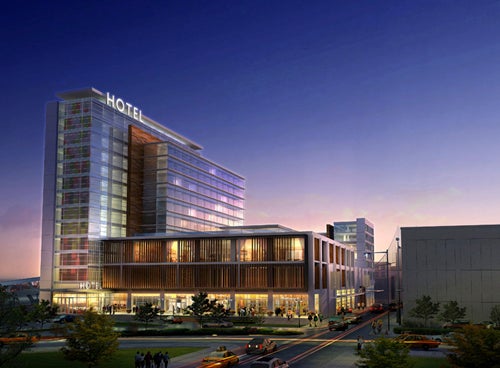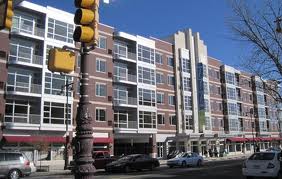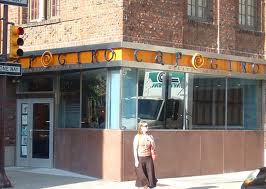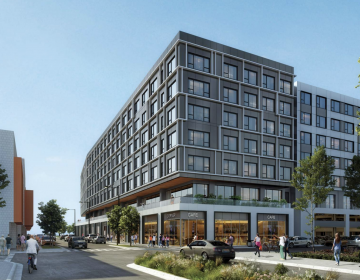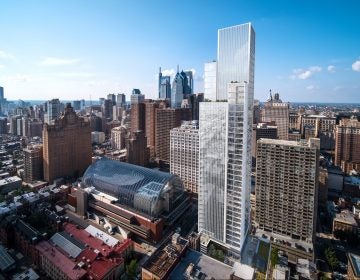Confident, proven private developers biding their time
Blatstein, Caplan, Goldman and Dranoff.
It’s not a law firm. They are the names of four of Philadelphia’s most consistent, well-financed and connected private developers, and very likely the ones to lead the city out of this season of construction inactivity.
There is still demand for residential growth in Center City, market observers say – such as the many apartment and condominium projects backed by the city’s tax abatement program that was launched in late 1990s. The 10-year deal (applied first to apartments and later to condos) touched off a blitz of rehab projects, turning dozens of abandoned industrial buildings into homes for tens of thousands of new residents. And though financing such projects a decade later remains a challenge in an unprecedented period for loan acquisition, it will be Bart Blatstein of Tower Investments, Ron Caplan of Philadelphia Management, Tony Goldman of the Manhattan-based Goldman Properties, and Carl Dranoff of Dranoff Properties who are poised to pick up where the market left off when the national economy took a nosedive in 2008.
“We have been sort of kicking the tires and looking at a few things, but for a number of reasons, it’s next to impossible to make a development project” in this credit environment, said Craig Grossman, managing director of Goldman’s Philadelphia office since its inception here in 1999. “To make a development project happen, you need all the planets to align, and that’s challenging – very challenging – these days.”
Nonetheless, regional real estate brokers and economic development officials are confident that Goldman remains committed to further redevelopment efforts in his particular niche – the area east of Broad Street and south of Market Street, along the up-and-coming 13th Street. It is Goldman – along with Caplan – whose name is uttered more often than anyone’s when asked if anything is moving out there. It is representatives from Caplan’s and Goldman’s offices who are regular visitors to the Planning Commission, seeking the city’s take on higher-profile project possibilities.
“That would be accurate,” said Deputy Mayor for Commerce Alan Greenberger. “They or people who work for them, with some regularity… . There’s always people who are coming to see us. There has been somewhat of an uptick in people coming to us, talking about the possibility of projects.”
Caplan, who has a very large Center City portfolio and is notoriously publicity shy, is out of town for a few weeks, his office reports, and was not available to comment for this story.
Exploratory
Greenberger wouldn’t specify what any of these possible developments are. “They’re not public, because they’re not even projects yet,” he said. “These are sort of exploratory discussions. There has been more of it recently than we certainly saw a year ago. That said, getting projects to close – designs are done, they’re good and they’re properly vetted, financing is solid and totally in place – these are big, long, hard roads to face, still. We’re not out of the woods yet. We’re seeing improvement, but it hasn’t proven itself yet in realized projects.”
Still, seeing more activity – even exploratory – from the likes of Dranoff and Caplan is good news for a bleak real estate market. “That would suggest that the private financial markets are more back in the game,” Greenberger continued. “The terms of the financing [overall] is clearly more than it was several years ago. A developer has to piece together many more threads of financing than they used to – it’s hard work. A lot of these deals are very complicated and everybody is contingent on everybody else, which makes it a little hard to know how to jump forward.”
For the moment, Greenberger said he’s seeing an increase in small-scale commercial loans, and that the city is using tools available through the Philadelphia Industrial Development Corp. to help smooth the way for developments that are otherwise underway.
“These are not prime lenders,” he said. “These are gap-fillers … but they are essential. They don’t provide a ton of money, but sometimes just enough to make a project go.”
Every supermarket project, for instance, comes with some amount of “significant public support,” he explained.
The environment remains tough, even with things opening up a touch, said Grossman. “There are more lenders today looking at projects than you saw six months ago and more that will consider projects,” he said. “To some extent it’s about relationships, and you see some of these lenders with their parameters maybe loosening up a little bit. But … recently over the last few months there appears to be some greater interest from some of the local and regional lenders.”
Blatstein has stayed busy throughout the downturn, continuing work on the expanding Piazza at Schmidt’s development. Interviewed by PlanPhilly last December, he predicted the markets would be in positive territory by the end of 2010.
“It’s a combination of 32 years of borrowing and paying back loans, that and solid projects,” Blatstein said at the time. “Lenders want to deal mainly with people who have been in the industry for quite some time.”
That’s why Dranoff Properties has been able to plow through the recession by completing its 777 South Broad project, changing the condo plan to apartments along the way. And why Dranoff has been able to return to the Camden waterfront – where he turned the old Victor Talking Machine factory into hundreds of apartments – and begin a new condo development at another former industrial building. For the latter (the Radio Lofts), Dranoff acquired some $40 million in financing late in 2009, according to a March article in the Inquirer. Especially coming in 2009, it was an impressive statement about his track record.
Dranoff also said in March that he’s looking at two or three other sites on South Broad Street for his next project.
The ‘standard Philadelphia story’
It wasn’t that long ago that developers could get a serious percentage of a project financed through one investor. Nowadays, private builders are bringing a much larger percentage of their own equity to bear than they did before. Further, Greenberger and others agree, even that is not enough – a primary lender and the developer’s own cash typically does not do it. Enter city and public agencies. If a project has enough public interest, it could get the help it needs from these entities.
For instance, “We’ve got multiple hotel proposals in front of us,” Greenberger said, but “financing hotels tends to be brutally hard. Most of them are from two years ago, and they’re still hanging around because they have been unable to get enough private and-or public financing. The public [dollars] are there when there’s a manageable gap to be closed. Especially in a hotel market in town where the room rates are just not high enough, relative to the cost of development.”
Many of these hotel proposals are in proximity to the expanding Pennsylvania Convention Center, and so are presumably in contention for some public financing. But again, there’s a major caveat.
“It’s the standard Philadelphia story,” Greenberger said. Room rates and hotel “revenues to support expensive development are simply insufficient. … . As the economy comes back, this is something that is very important for Philadelphia to face.”
It comes down to “rental housing, student housing, those kinds of things – or anything that’s related to medical facilities,” said Walt D’Alessio, former PIDC chairman and a senior executive with NorthMarq Capital, a national commercial real estate investment banking firm. “That’s financeable, and that’s being built.”
Relatively speaking, “The city’s doing well, and our company is in a lot of markets,” D’Alessio said. “Spend a little time in our Florida office, and you’ll see the other side. In Philadelphia, we don’t overbuild.”
Casinos and development
And we certainly do not overbuild our riverfronts. D’Alessio is surprisingly blunt when it comes to the prospects for the Delaware River waterfront, and is dismissive of the PennPraxis studies there, saying, “There’s no economics associated with it.”
“Maybe if anybody had a rational, reasonable rental housing project, but I don’t know what else could be built there,” D’Alessio said about the Delaware waterfront. “There’s no demand for office space, no demand for significant retail commercial. Even in better markets there wasn’t much demand.”
That would be bad news for the prospects of the long-discussed Philadelphia World Trade Center, a proposal for a suite of buildings along northern Delaware Avenue at Callowhill Street. (The would-be developer, Waterfront Renaissance Associates, sued the city and neighborhood groups there, accusing the city of purposely de-valuing the property via a de facto moratorium on waterfront development.)
“As people tend to forget sometimes, the waterfront is quite a distance from the center of gravity in the city,” D’Alessio. “This is not Baltimore. Our waterfronts are quite different.”
Further, the development of one or two casinos won’t help much, either, he said. “The two casinos wouldn’t spur further development unless it was casino-related,” D’Alessio went on. “You’re not going to build housing next to a casino. Maybe a hotel or some kind of recreation-oriented facility that could deal with the people you attract to that location. Very few people want to be right next to the casino. I don’t know of any developer who wants to build quality housing next to a a casino. Maybe I’m wrong, but look at Atlantic City. Look at Chester Downs, and Bensalem (the Parx casino). Casinos bring economic activity, no question, but I don’t see it as being much of a development driver. I’d love to be proved wrong.”
D’Alessio could be proven wrong if a couple of projects introduced recently come to fruition. One of them is the Waterview Grande proposal to convert two 80-year-old concrete cold storage facilities into apartments. The Northern Liberties project (North Delaware Avenue at Brown Street), by Michael Samschick and Core Realty, would have 192 units. It was given “conceptual approval” by the Planning Commission after Samschick said he had financing in place.
But surer bets will likely be found in Center City with “renovations of existing buildings, which we like,” Greenberger said. He was referring to hotels like the Palomar and the Le Meridien, but the bulk of Caplan’s and Goldman’s success has come from down-at-the-heels Center City properties that have been turned into apartments, condos and retail.
As for Goldman, its job in the East Market submarket known as the “hole in the donut” is maybe halfway done, Grossman said. The 13th Street area is “the area that we’ve been focused in – I’d love to see this area continue to positively change. We’re always looking to add value and raise the pace level and differentiate our product. We’ve certainly achieved certain goals here but there is definitely more that we think we can do and would like to do.”
What the company is looking at now is “the typical sort of Goldman project that you’ve come to see here in Center City,” Grossman said. “Mixed-use properties. It’s really difficult for me to say, with all that needs to fall into place to make a project happen these days. All [of them] in and around our existing portfolio, just completing some of our smaller rehabilitations and renovations within our existing portfolio.”
Extensions
In the meantime, developers with work already introduced in concept form to city agencies, including a few public proposals in front of the Planning Commission’s monthly meeting, recently caught an enormous break, thanks to the Pennsylvania Permit Extension Act.
The state law gives developers until July 2013 to break ground on residential, commercial or infrastructure projects that have already received permits. It applies to any project that had active permits as of January 2009 – even if those permits have expired. The law was a direct means of allowing more time to acquire financing.
“It’s terrific,” said Craig Schelter of the Development Workshop, a group of mostly private builders who have been influential in the city’s ongoing re-write of the Zoning Code and the remapping process. “I think it’s very important.” The usual back-and-forth with city agencies to keep a proposal alive when delays are happening provides “an opportunity for hassle that the developers don’t need right now.”
Public and ‘institutional’
In the meantime, a number of “institutional” projects are set to commence or are already underway.
Center City District President “Paul [Levy] and the mayor and I are in discussions about the Dilworth Plaza project,” said Gov. Ed Rendell, at an early June press event announcing more improvements to the Benjamin Franklin Parkway. It would be “a spectacular anchor,” he said, situated across from City Hall, and helping to bridge two disparate areas of Center City.
But there are other things in the works, too, including Blatstein’s Temple University plans, and the ARC Properties proposal to develop 401 Race Street, at the foot of the Benjamin Franklin Bridge. Also near Temple, the Jonathan Rose Cos. of New York and Philadelphia nonprofit Asociacíon Puertorriqueños en Marcha, with a public assist, are set to break ground on a $48 million mixed-use transit-oriented development at 9th and Norris streets.
“The prospects for Philadelphia are very, very good when we come out of this recession, and we will,” Rendell said. “The city is poised to take off and reach a new level.”
Waiting in the wings are at least four guys who are happy to let Rendell and other politicians get the face time. Their names are Bart, Ron, Tony and Carl.
Contact the reporter at TWalsh@PlanPhilly.com.
WHYY is your source for fact-based, in-depth journalism and information. As a nonprofit organization, we rely on financial support from readers like you. Please give today.



